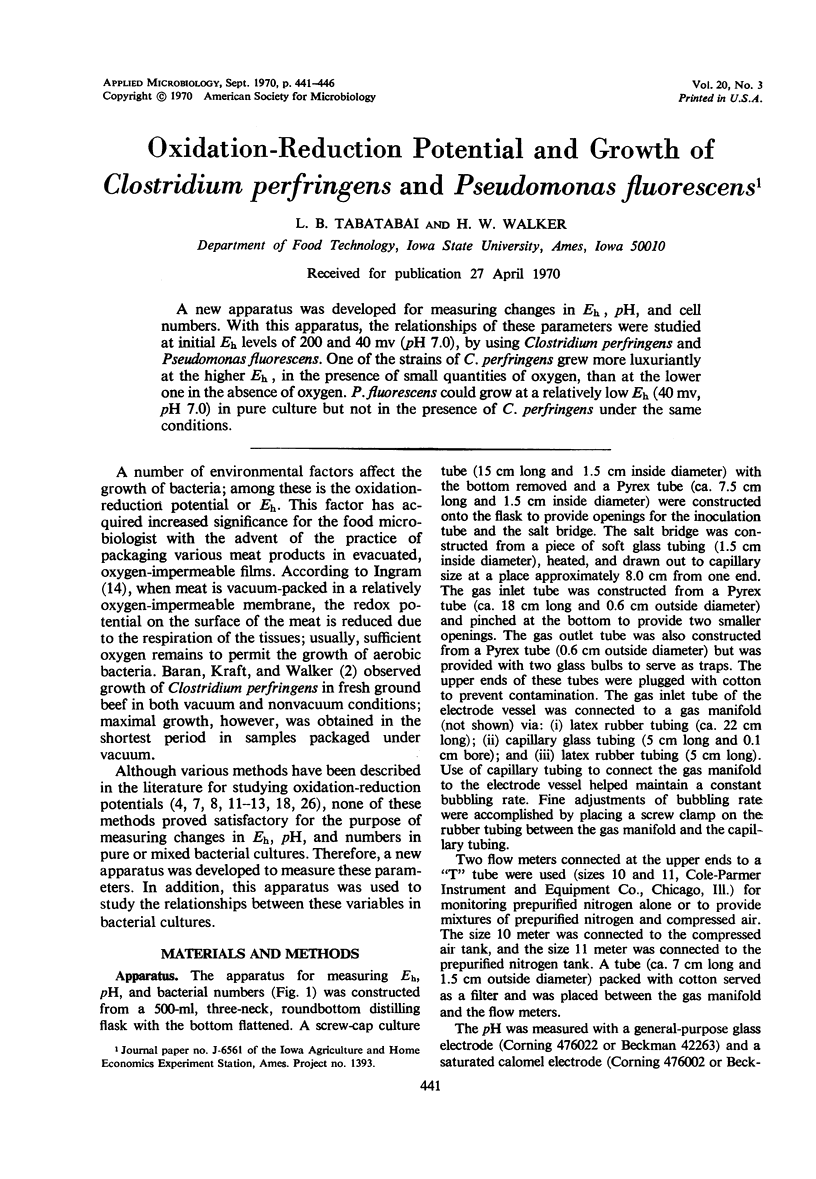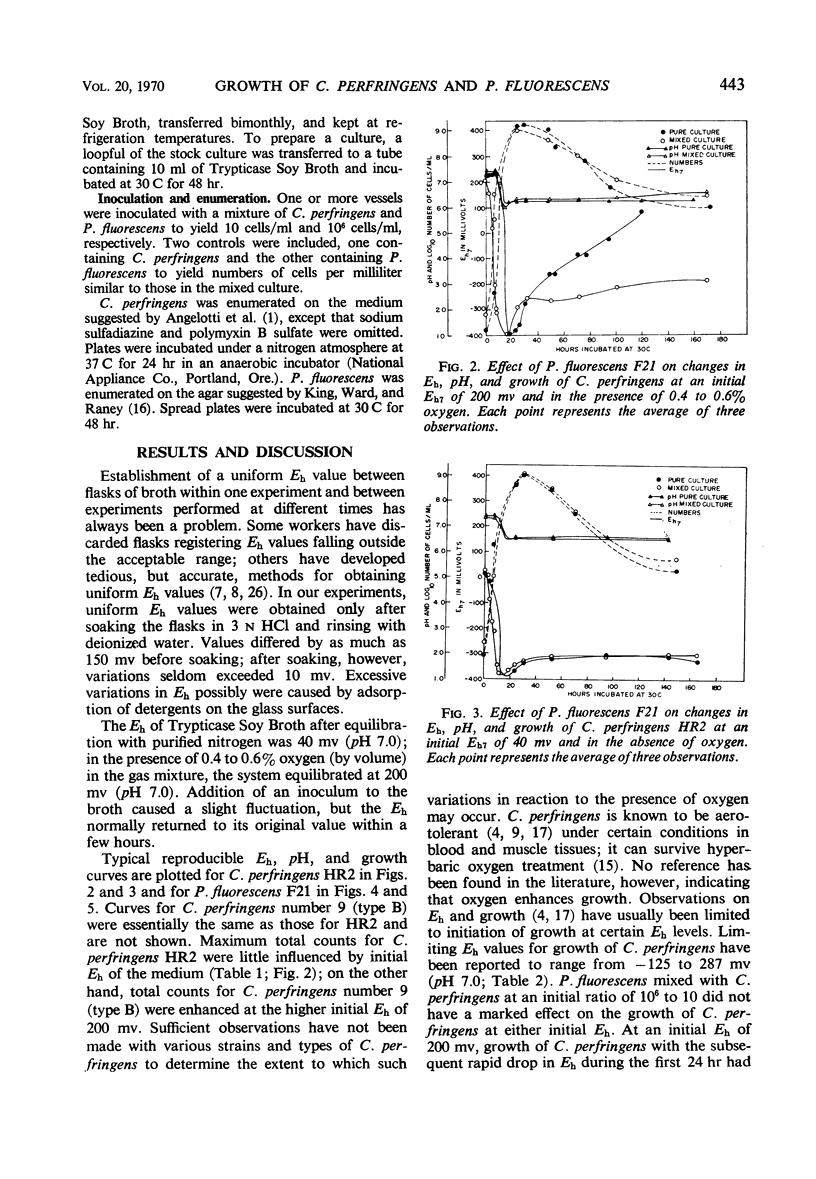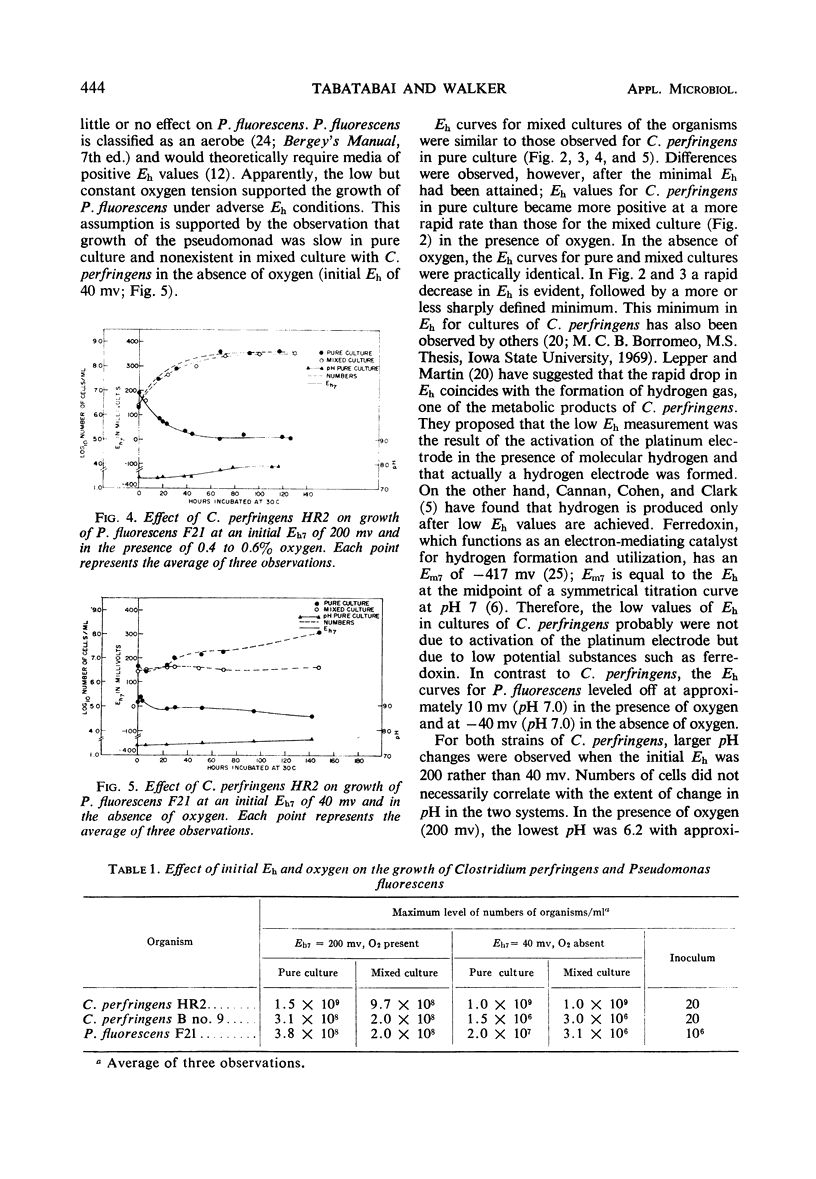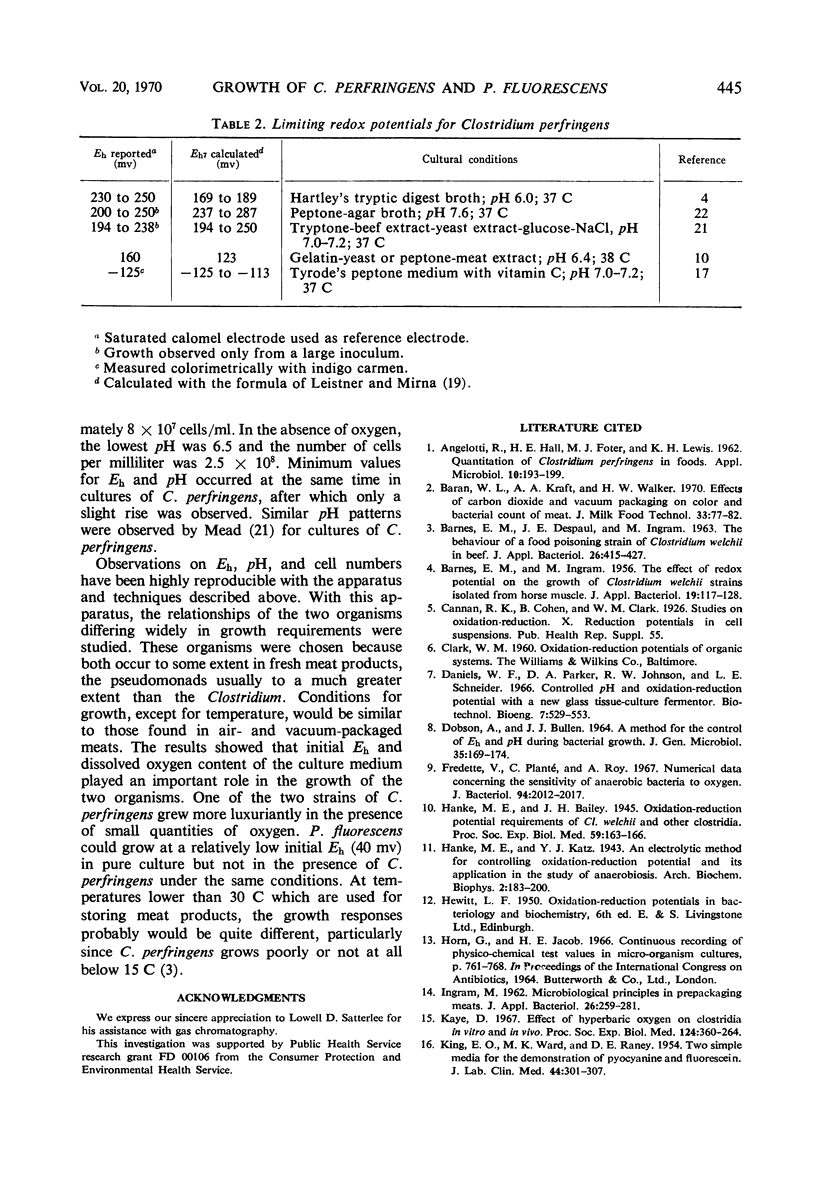Abstract
A new apparatus was developed for measuring changes in Eh, pH, and cell numbers. With this apparatus, the relationships of these parameters were studied at initial Eh levels of 200 and 40 mv (pH 7.0), by using Clostridium perfringens and Pseudomonas fluorescens. One of the strains of C. perfringens grew more luxuriantly at the higher Eh, in the presence of small quantities of oxygen, than at the lower one in the absence of oxygen. P. fluorescens could grow at a relatively low Eh (40 mv, pH 7.0) in pure culture but not in the presence of C. perfringens under the same conditions.
Full text
PDF





Selected References
These references are in PubMed. This may not be the complete list of references from this article.
- ANGELOTTI R., HALL H. E., FOTER M. J., LEWIS K. H. Quantitation of Clostridium perfringens in foods. Appl Microbiol. 1962 May;10:193–199. doi: 10.1128/am.10.3.193-199.1962. [DOI] [PMC free article] [PubMed] [Google Scholar]
- DOBSON A., BULLEN J. J. A METHOD FOR THE CONTROL OF EH AND PH DURING BACTERIAL GROWTH. J Gen Microbiol. 1964 May;35:169–174. doi: 10.1099/00221287-35-2-169. [DOI] [PubMed] [Google Scholar]
- Fredette V., Planté C., Roy A. Numerical data concerning the sensitivity of anaerobic bacteria to oxygen. J Bacteriol. 1967 Dec;94(6):2012–2017. doi: 10.1128/jb.94.6.2012-2017.1967. [DOI] [PMC free article] [PubMed] [Google Scholar]
- KING E. O., WARD M. K., RANEY D. E. Two simple media for the demonstration of pyocyanin and fluorescin. J Lab Clin Med. 1954 Aug;44(2):301–307. [PubMed] [Google Scholar]
- Kaye D. Effect of hyperbaric oxygen on Clostridia in vitro and in vivo. Proc Soc Exp Biol Med. 1967 Feb;124(2):360–366. doi: 10.3181/00379727-124-31743. [DOI] [PubMed] [Google Scholar]
- Kligler I. J., Guggenheim K. The Influence of Vitamin C on the Growth of Anaerobes in the Presence of Air, with Special Reference to the Relative Significance of Eh and O(2) in the Growth of Anaerobes. J Bacteriol. 1938 Feb;35(2):141–156. doi: 10.1128/jb.35.2.141-156.1938. [DOI] [PMC free article] [PubMed] [Google Scholar]
- Knight B. C. Oxidation-reduction studies in relation to bacterial growth: A method of poising the oxidation-reduction potential of bacteriological culture media. Biochem J. 1930;24(4):1075–1079. doi: 10.1042/bj0241075. [DOI] [PMC free article] [PubMed] [Google Scholar]
- Mead G. C. Combined effect of salt concentration and redox potential of the medium on the initiation of vegetative growth by Clostridium welchii. J Appl Bacteriol. 1969 Dec;32(4):468–475. doi: 10.1111/j.1365-2672.1969.tb01000.x. [DOI] [PubMed] [Google Scholar]
- Reed G. B., Orr J. H. Cultivation of Anaerobes and Oxidation-Reduction Potentials. J Bacteriol. 1943 Apr;45(4):309–320. doi: 10.1128/jb.45.4.309-320.1943. [DOI] [PMC free article] [PubMed] [Google Scholar]
- VALENTINE R. C. BACTERIAL FERREDOXIN. Bacteriol Rev. 1964 Dec;28:497–517. doi: 10.1128/br.28.4.497-517.1964. [DOI] [PMC free article] [PubMed] [Google Scholar]
- Williams P. P. Dispensing Apparatus for Controlling E(h), pH, and Volume of Anaerobic Bacterial and Protozoal Culture Media. Appl Microbiol. 1966 Nov;14(6):1045–1046. doi: 10.1128/am.14.6.1045-1046.1966. [DOI] [PMC free article] [PubMed] [Google Scholar]


